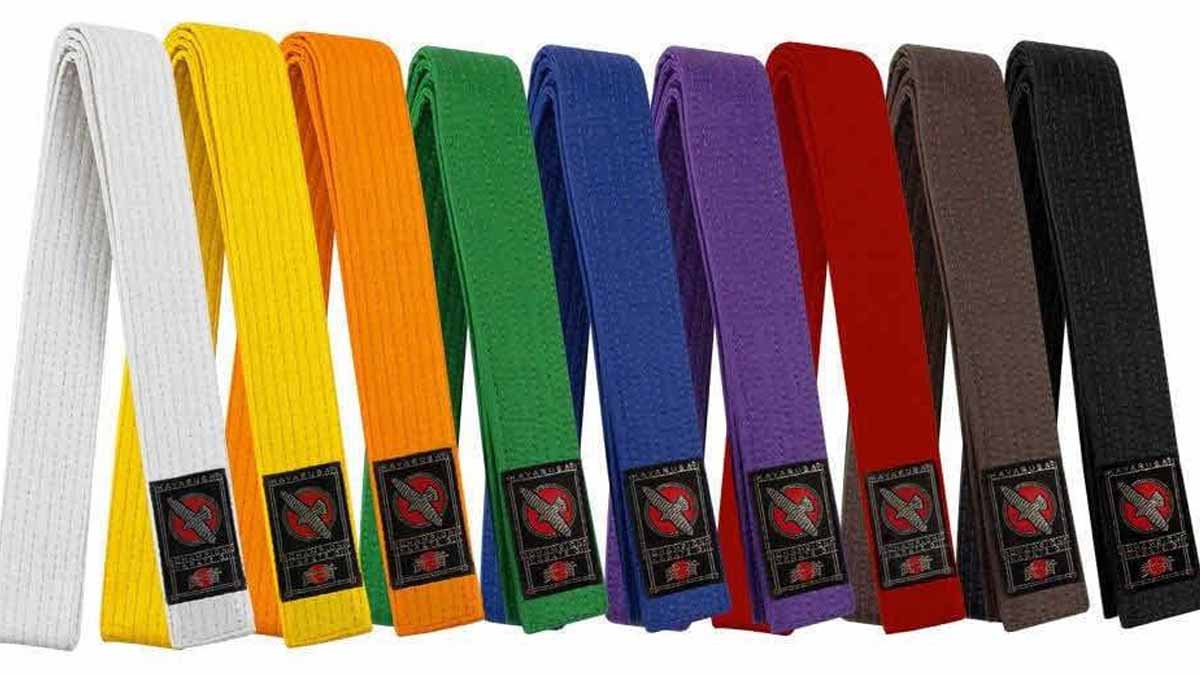Karate Belt Order In America, Have you ever thought about why there are so many different colored belts in Karate classes in America?
The colored belts show how well a student is doing in their training. They also give students a sense of pride and achievement as they move up in skill levels and get new colored belts.
But why do we have these colored belts in Karate? And what do they all mean? Let’s explore the origins of colored belts in Karate and understand their significance!
How Many Belts In Karate?
Almost everyone wants to know how much skill and ability a person who has obtained a black belt possesses. However, simply by seeing a belt tied around someone’s waist, we cannot determine their proficiency and skill level. We do not know how we can assess their expertise and skill. Through today’s post, “Karate Belt Order In America,” we will provide you with complete information.
Karate has 9 belt colors: white, yellow, orange, green, blue, purple, red, brown, and black. While many people know only about the most common colors, there might be different levels of the same color in some karate belt systems.
Most people are only aware of two or three belts. One is the first belt, which we call the white belt. It is worn during initial training. Let me tell you that the white belt is the belt that most people feel proud to wear.
After that comes the second yellow belt. Most people know about it. With the yellow belt, people start to understand martial arts better, and they begin to do Karate moves a little more correctly.
The percentage of people who achieve the yellow belt is slightly less than the white belt because reaching the yellow belt also requires a lot of hard work. And quite a few people give up even at the yellow belt.
Next is the third belt, the black belt, about which many people are aware, but the percentage of those who achieve it is quite low. Because obtaining a black belt in martial arts is like biting into a tough nut. The percentage of people obtaining a black belt in Karate is only 3.2%, which is very low.
After reading this article “Karate Belt Order in America” today, you will find answers to all your questions. This is because, besides these three belts, there are also several belts in martial arts, each with its own unique characteristics, about which most people are unaware.
Before we delve into the number of belts and their colors in karate, let’s first understand where and when the concept of ranking through belts in karate originated.
Origin Of The Karate Belt
There are several theories about the origin of karate belts, but some instructors believe that initially, there was only one belt called the white belt. At that time, training would commence with the white belt, which would gradually become darker over time due to dirt, dust, and sweat.
The older and dirtier a student’s belt was, the better their skill was considered. The tradition of washing karate belts did not exist from the beginning. Over the years, due to training while wearing the same belt, its color would darken, eventually becoming black, hence called the black belt.
Additionally, some instructors also say that the use of colored belts was introduced by a Japanese judo instructor to demonstrate the progress of judo students. These instructors were known as the founders of modern judo, one of whom was Dr. Jigoro Kano.
Around the 1880s, the first karate belt system was adopted. Then, in the early 1900s, some more colors were added to it. Approximately 30 years later, this belt system began to gain prominence as a means to show progress. At that time, the white belt was for new students, while the black belt was for instructors.
Karate Belt Order
In karate, a colored belt system is used to demonstrate your progress. As you all may have observed, all martial artists and karate students wear a thick cotton belt around their waist, which comes in different colors.
These belt colors signify the skill and proficiency of karate students. It’s not necessary for the Karate Belt Order to be the same in all martial arts. It can vary according to the martial arts style.
When you pass your exams while learning karate, you earn a different karate belt color. As students progress, the color of their belts deepens, reflecting their advancement in the martial arts.
This is a historical process of showing progress in martial arts. In karate, you start your journey with a white belt. Then, through various colored karate belts, your skills are expanded.
Karate Belts Colors And Kyu
In Japan, the karate belt system is divided into Kyu ranks, which are demonstrated in a hierarchy from higher to lower levels. Progress in karate also follows the direction of lower Kyu ranks.
For instance, in karate, before the black belt, there is the brown belt, which is considered the highest-level belt. However, its Kyu number is 1. Whereas the white belt, which is the lowest level belt, has a Kyu number of 9.
| Belt Color | Rank |
| White Belt | 9th Kyu |
| Yellow Belt | 8th Kyu |
| Orange Belt | 7th Kyu |
| Green Belt | 6th Kyu |
| Blue Belt | 5th Kyu |
| Purple Belt | 4th Kyu |
| Red Belt | 3rd Kyu |
| Brown Belt | 2nd Kyu |
| Brown Senior Belt (Pre-Black Belt) | 1st Kyu |
| Black Belt | 1st Dan |

Martial arts trainer Karatians School India, Thank you for reading this post. This website is about martial arts, sports, and entertainment. Its goal is to make more people aware of martial arts and help them become self-reliant.

